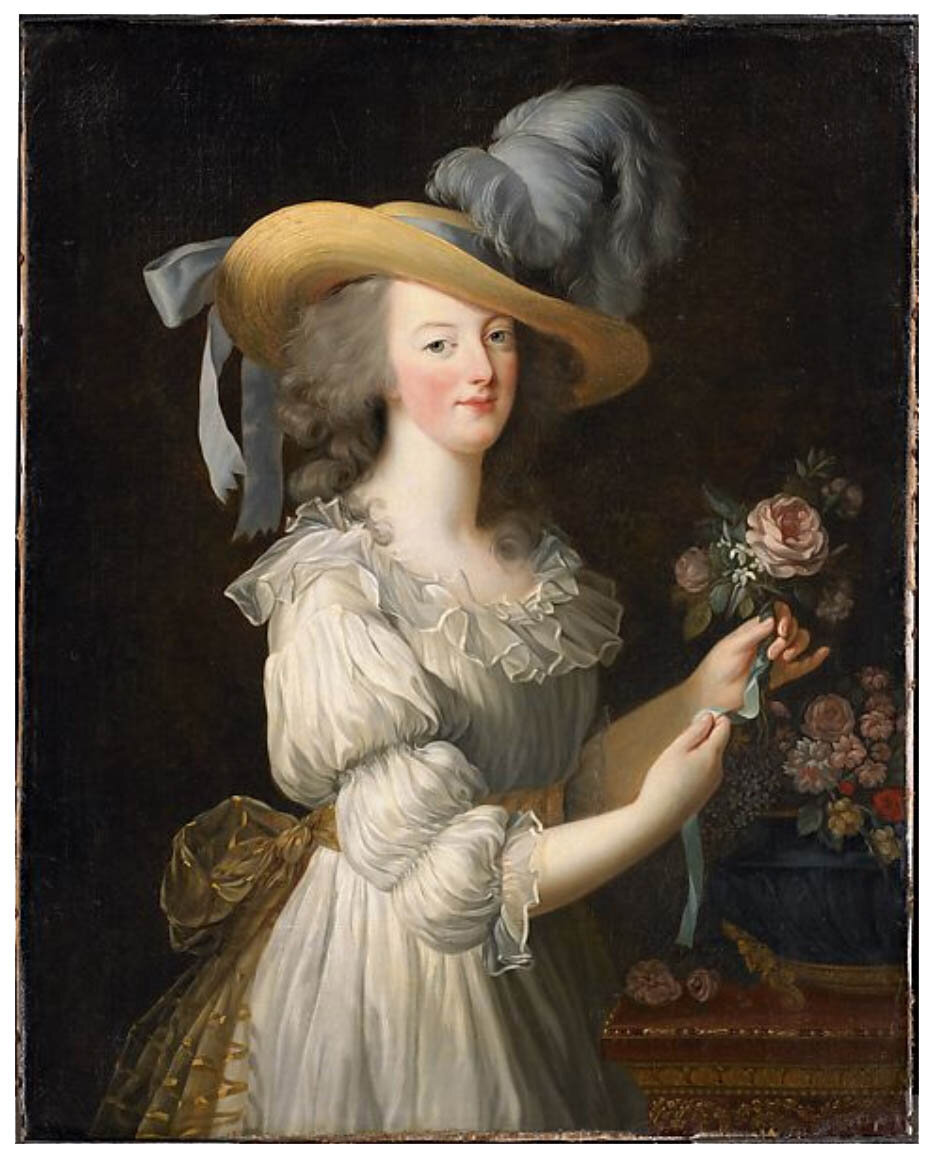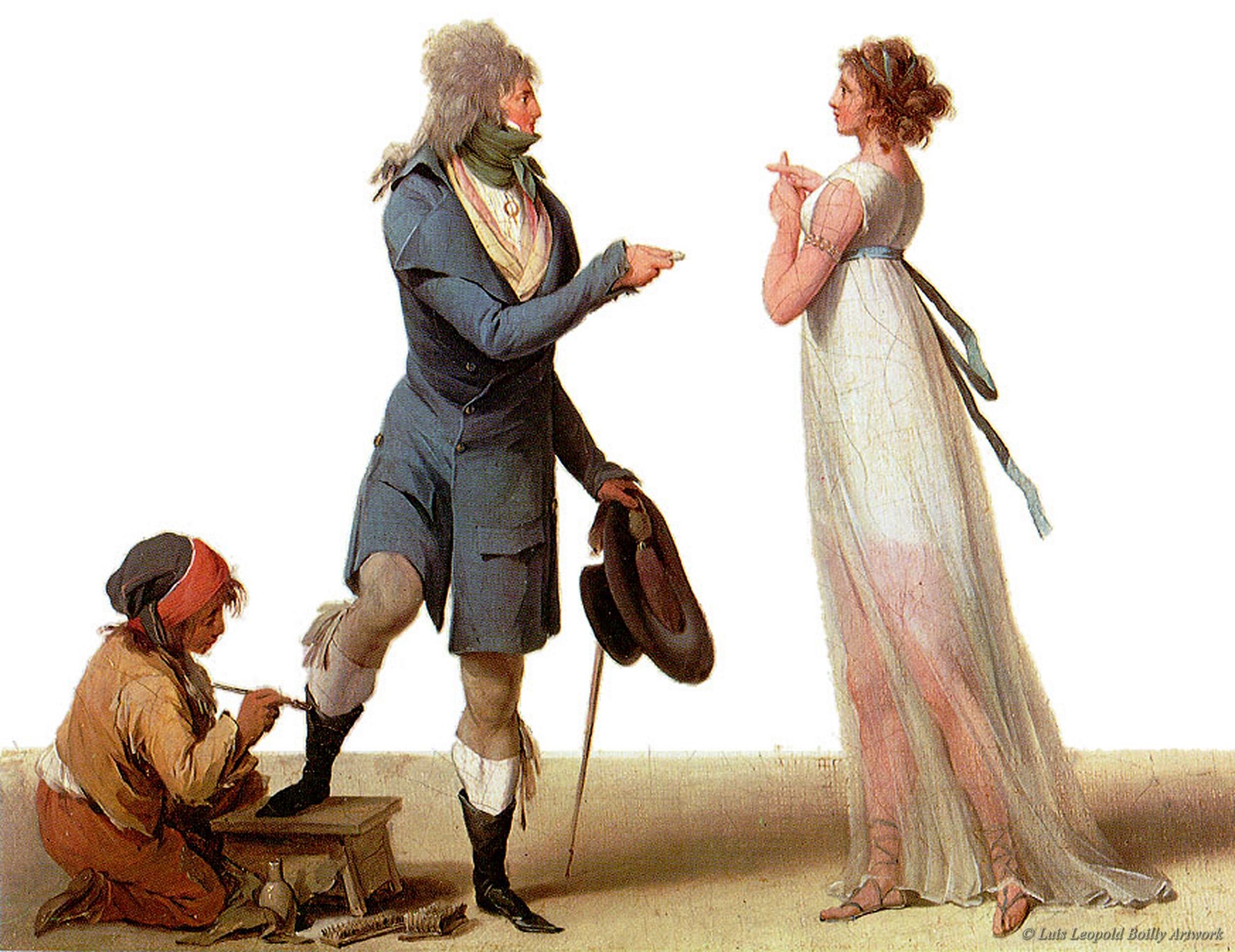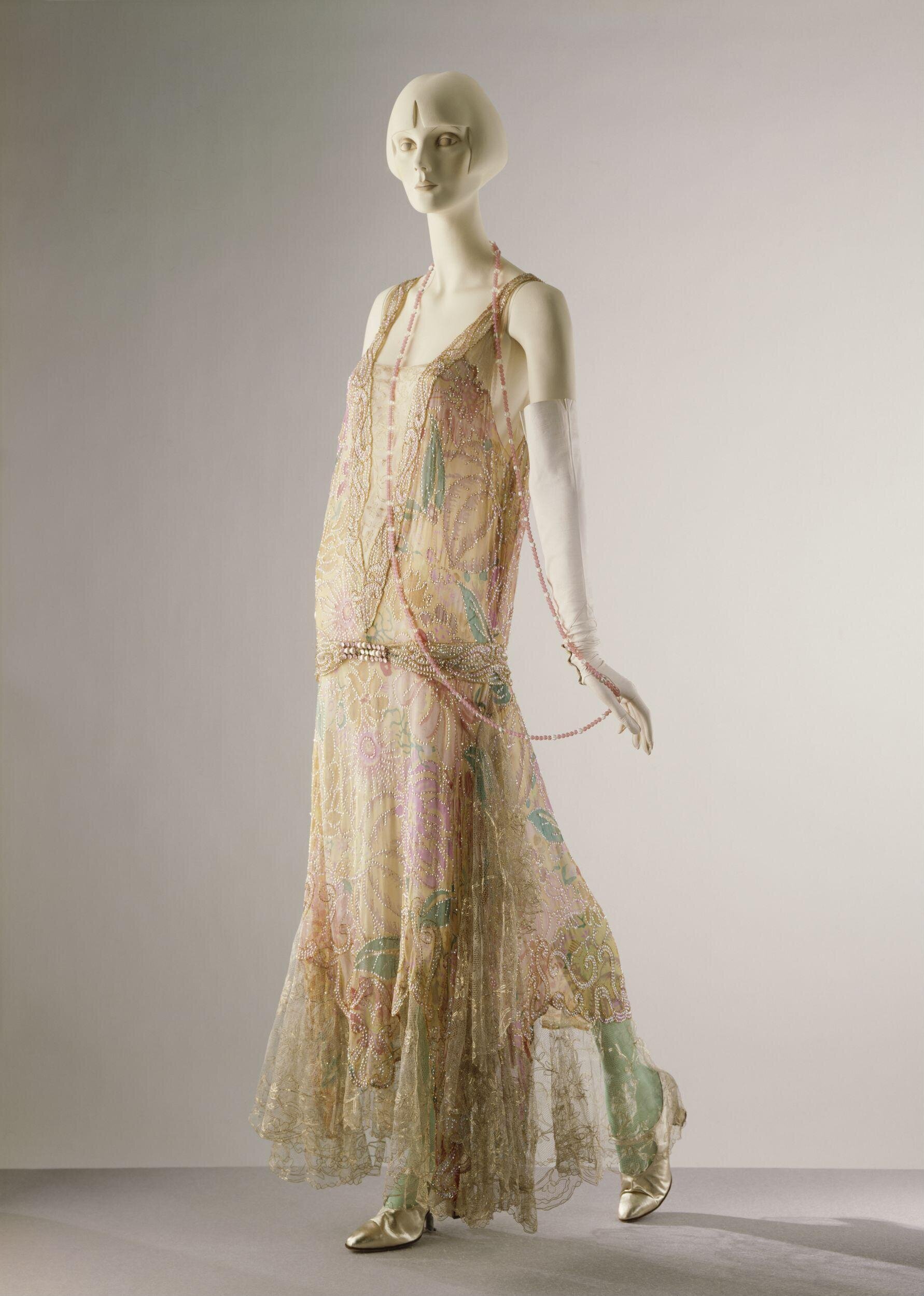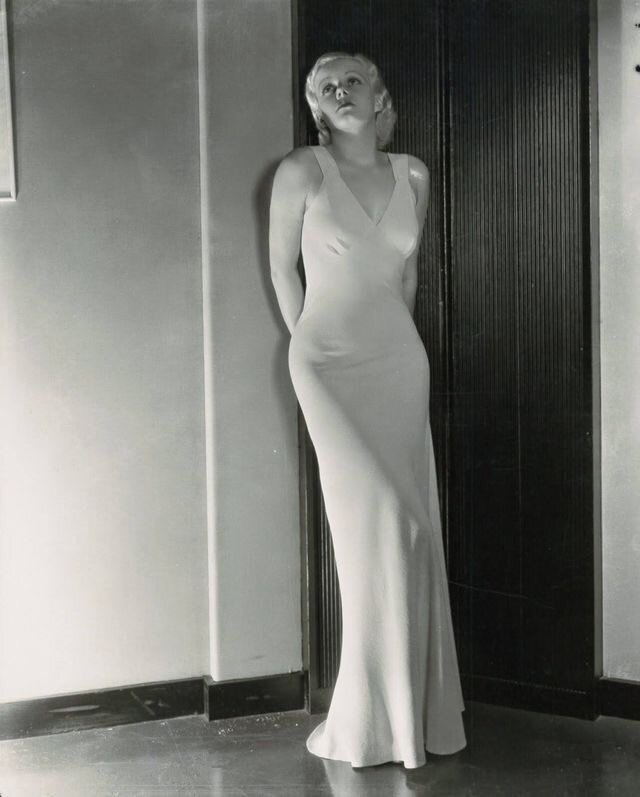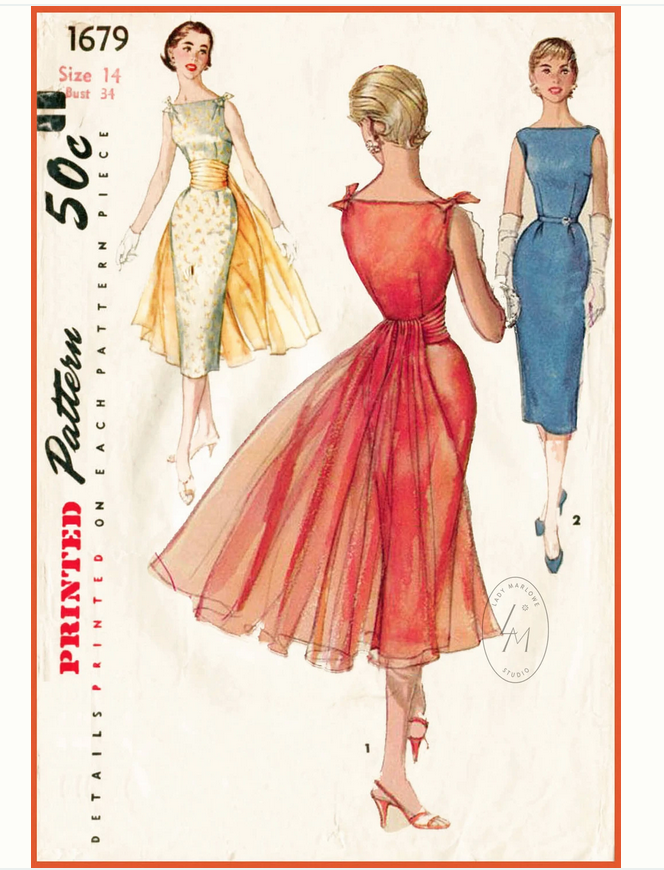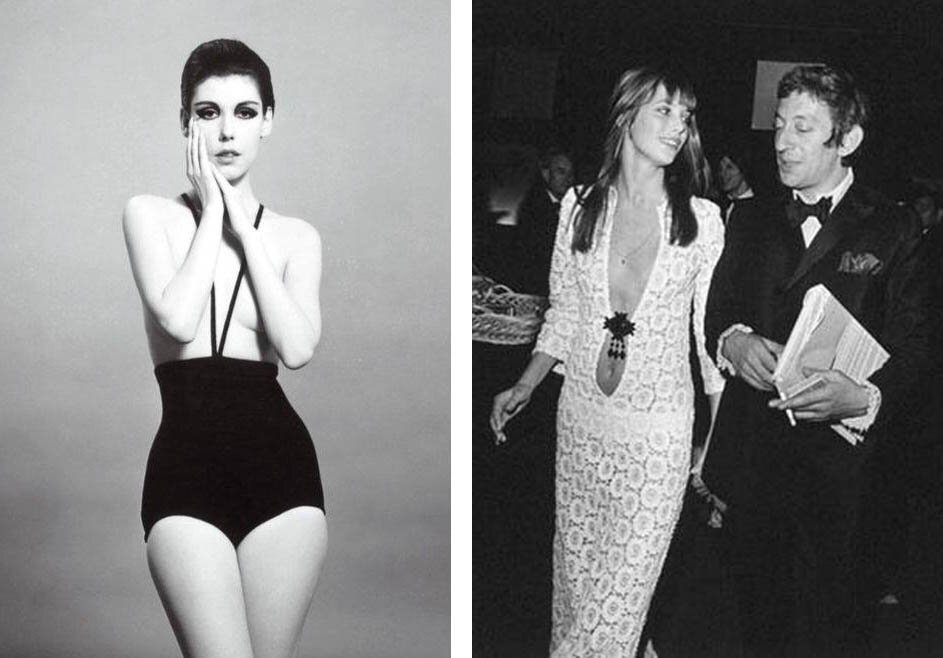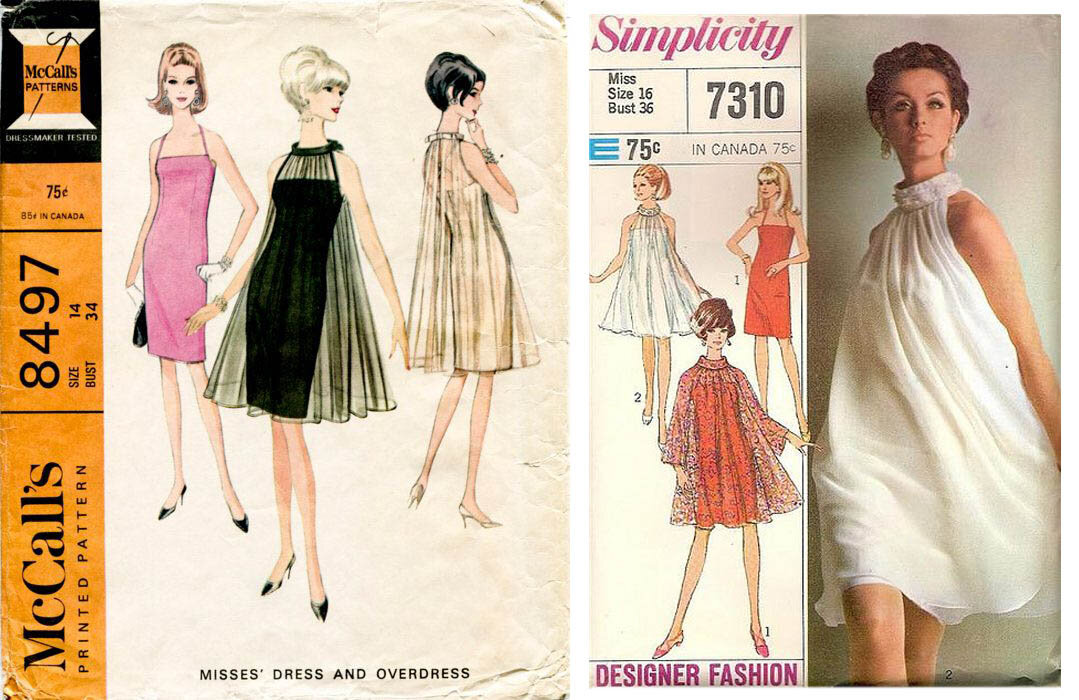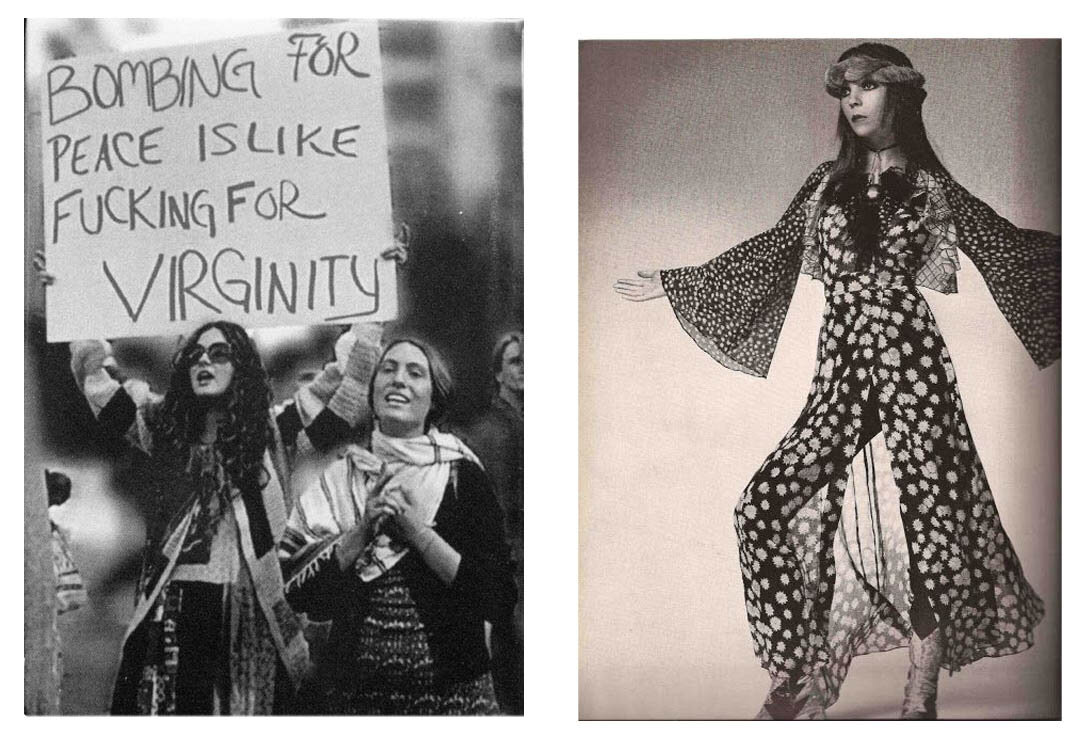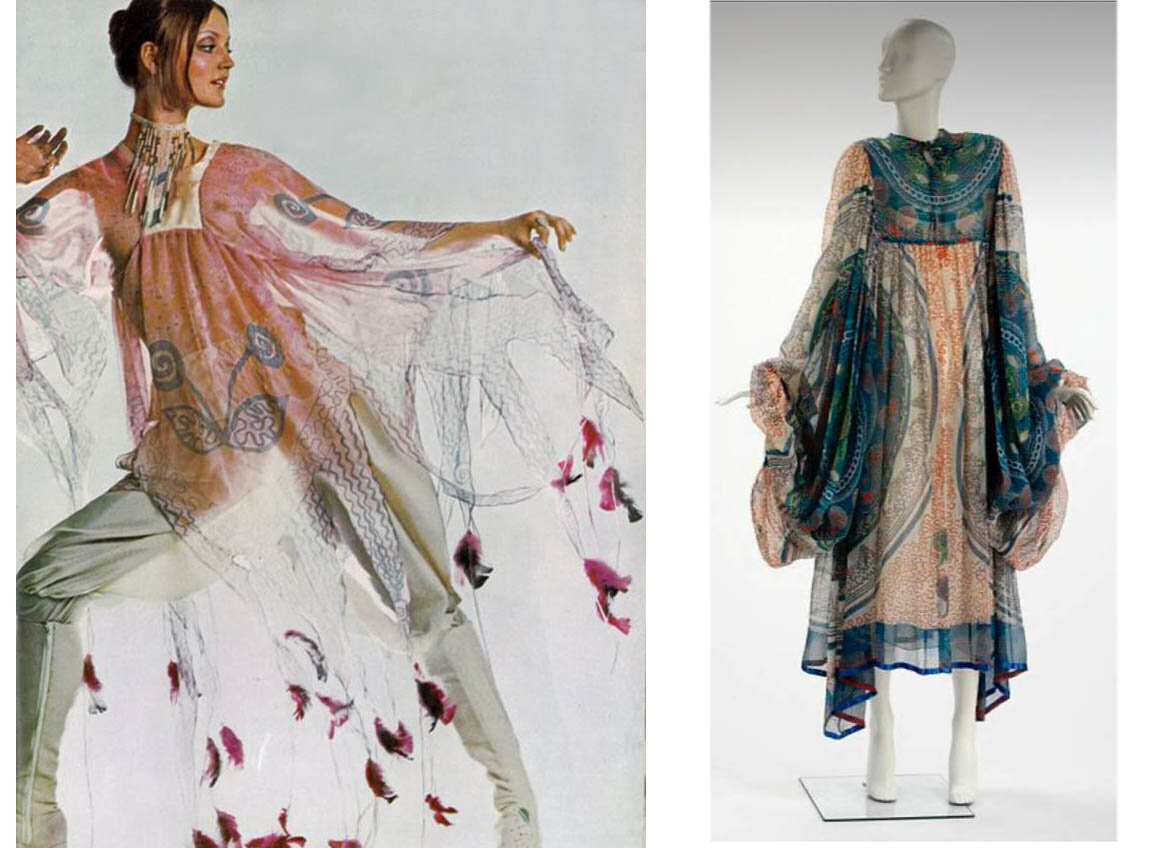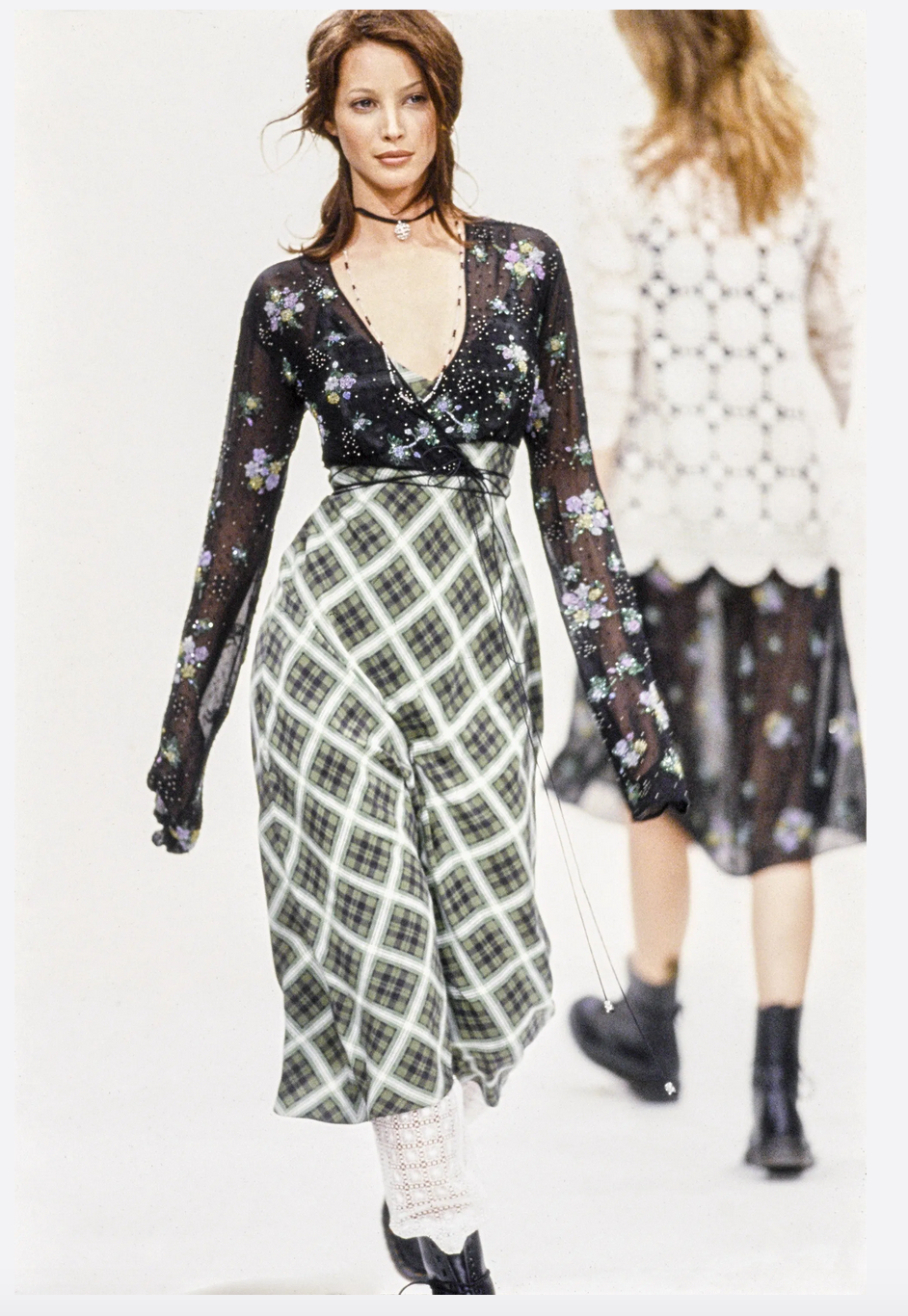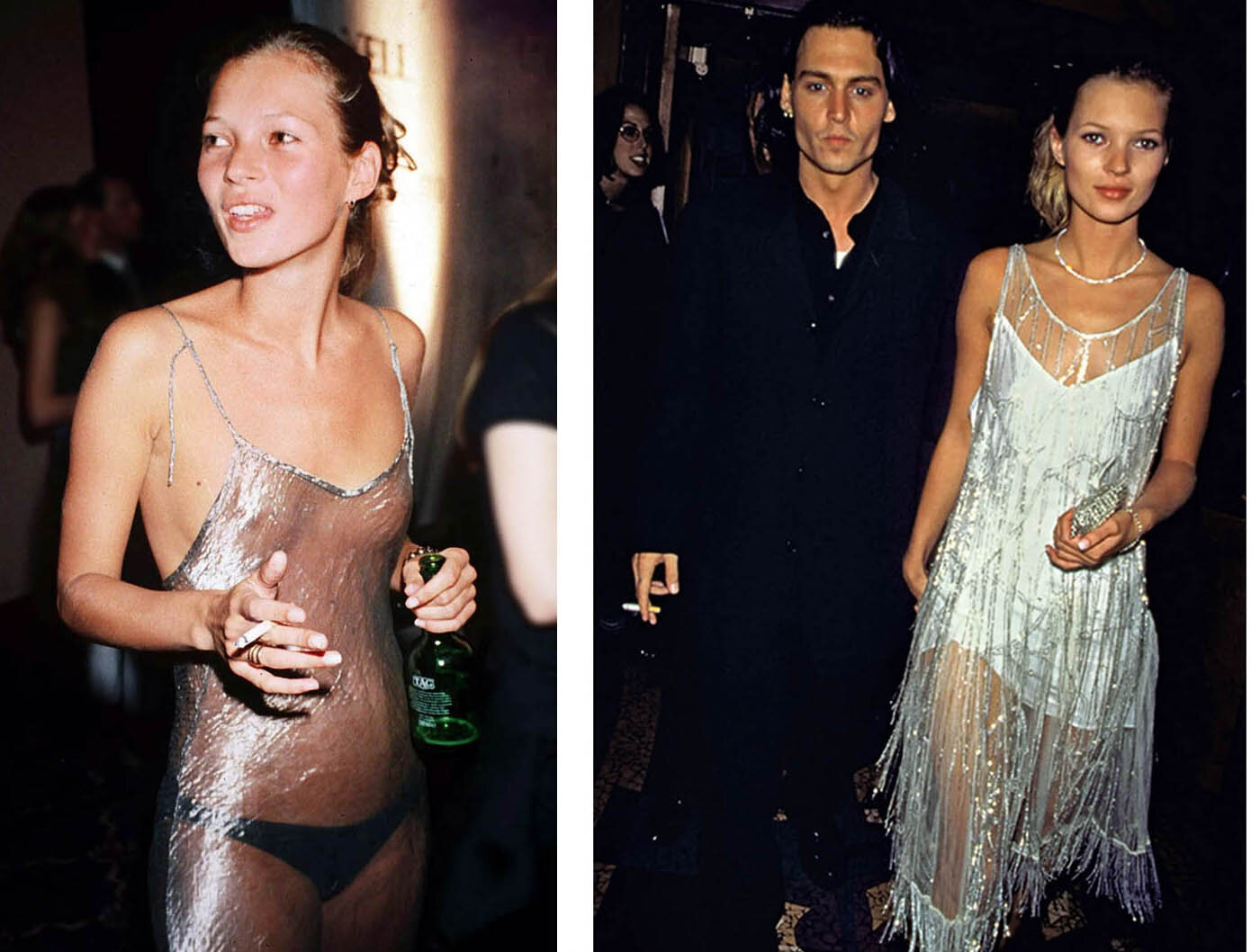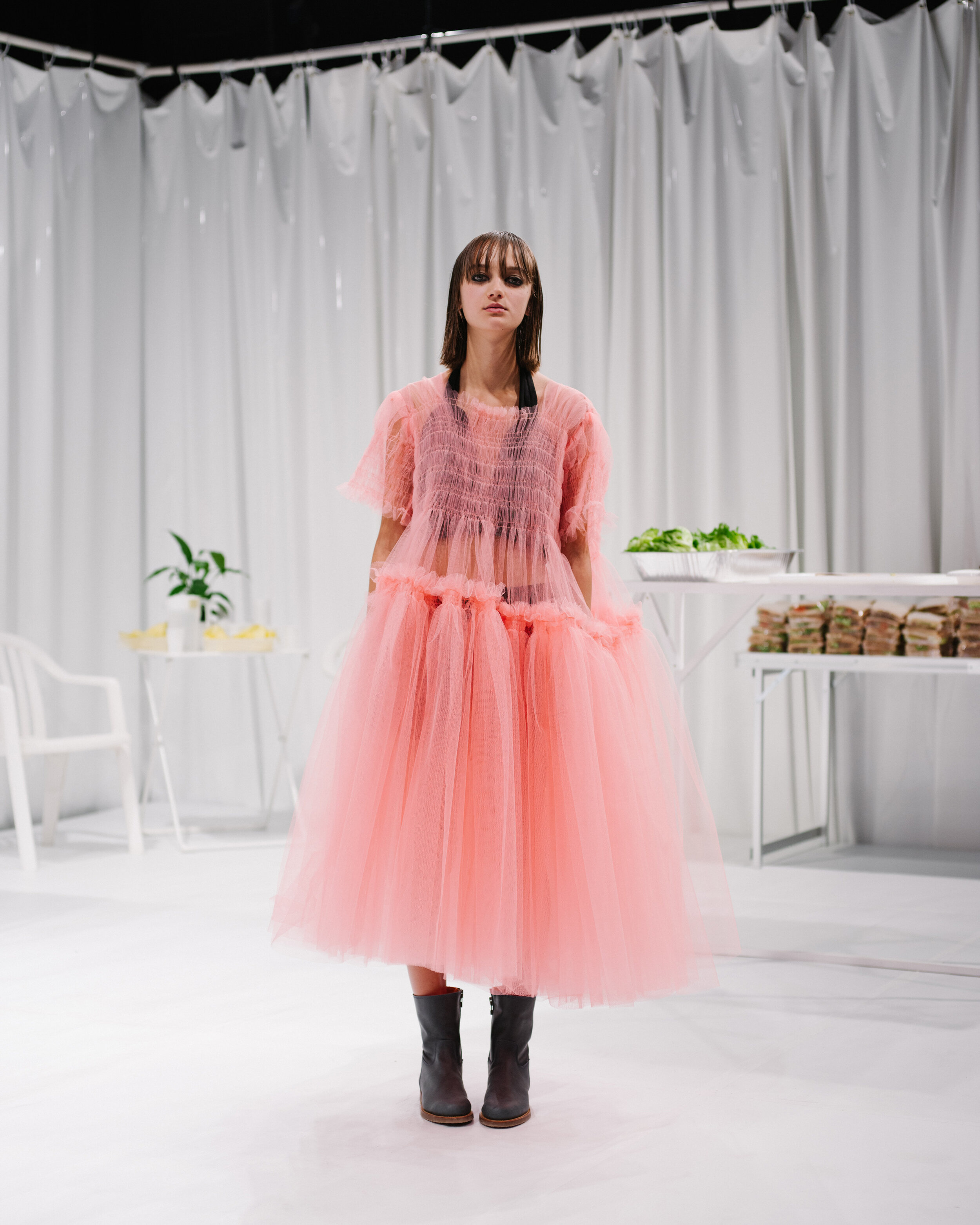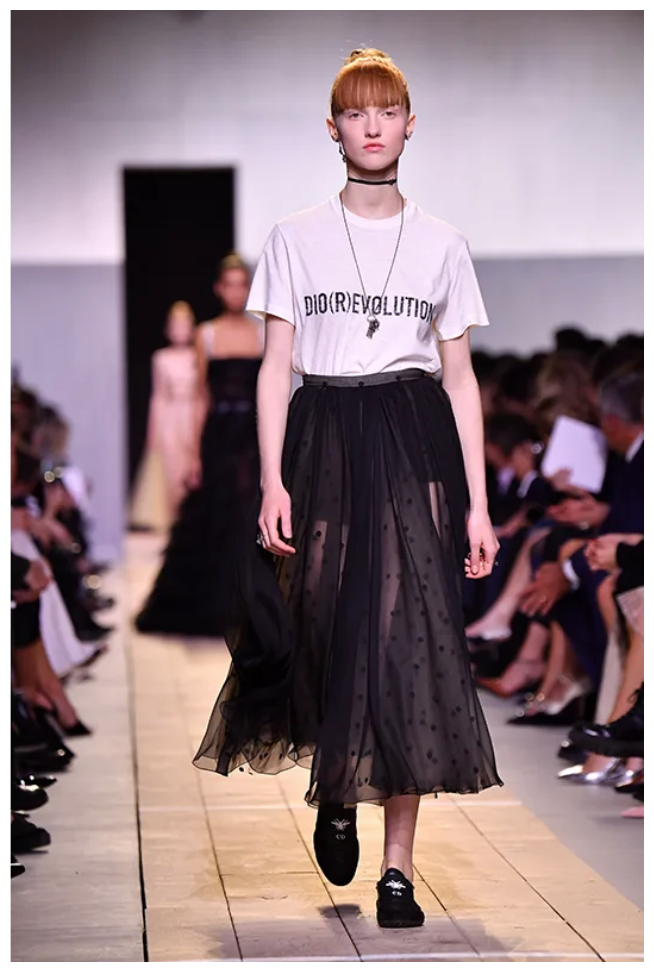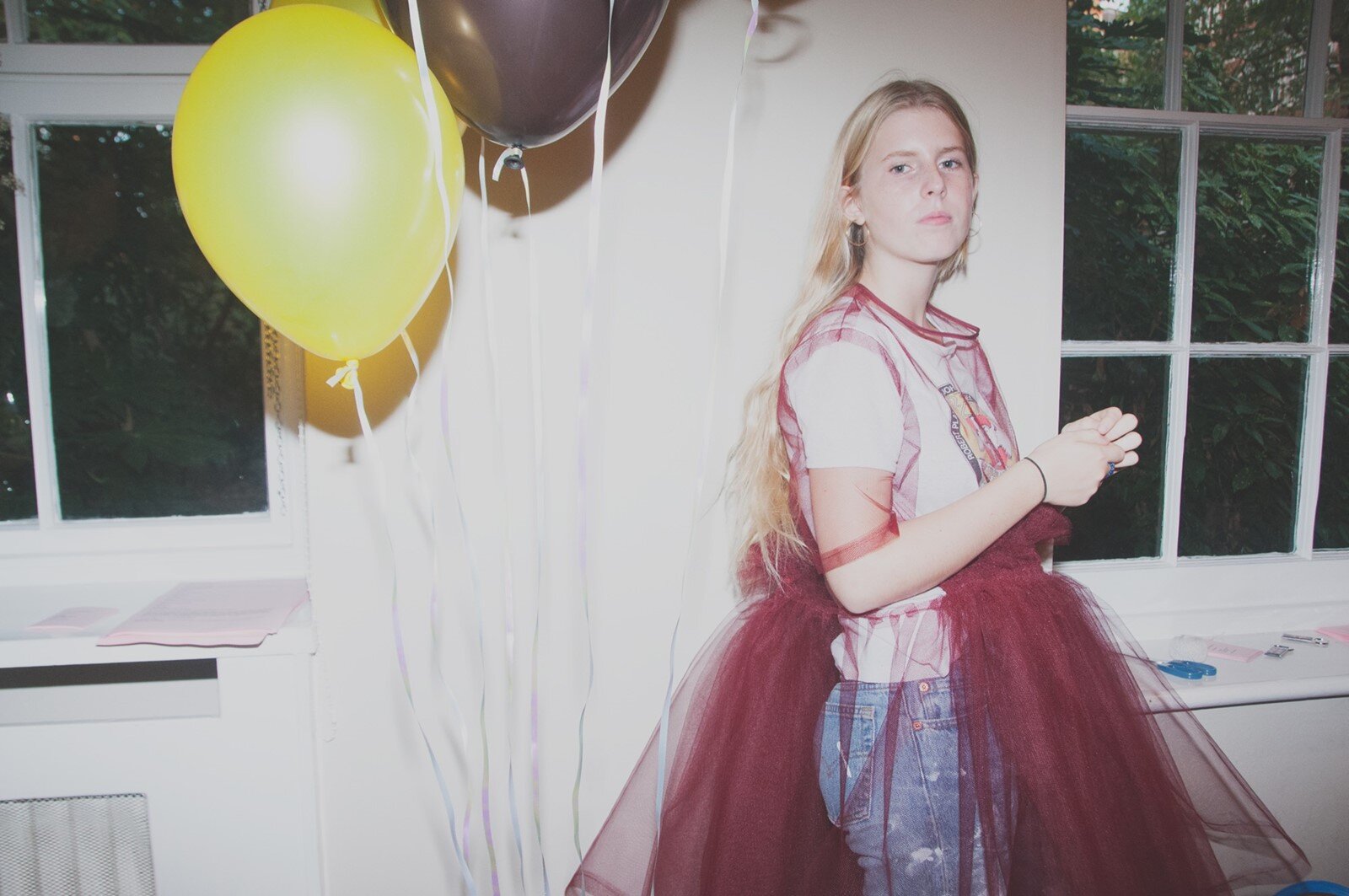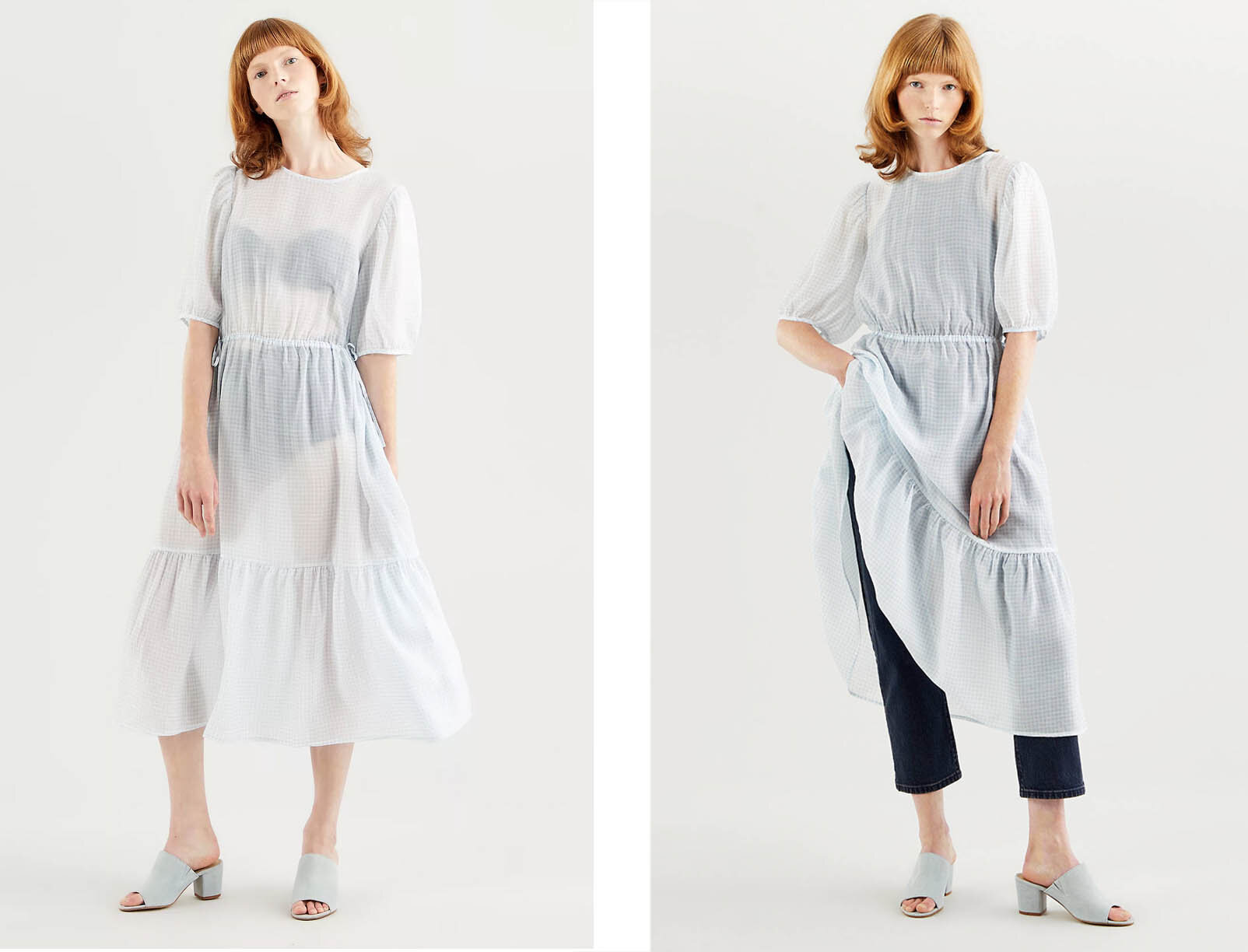A brief history of the sheer dress and how to wear it now.
Sheer dresses at first glance might seem scary, but understanding how it has developed and why and how to wear it today, it might change your mind!
Let's have a quick look at the history of the sheer dress and why the fascination with the transparent dresses has influenced society throughout the ages.
Antiquity / Luxury
The allure of gossamer light materials dates as far back as the sixteenth century BCE in Egypt, where both men and women would drape themselves in finespun linen. High ranking Egyptians wore diaphanous, pleated linen garments known as kalasiris which were constructed of a single rectangular piece of material.
Fashion plates showing how to wear a kalasiris.
Neoclassicism / Emancipation
Five centuries later, England would come to monopolize the textile industry in the Indian subcontinent and transform gauzy muslins into beautiful Neoclassical inspired gowns that were in high fashion towards the end of the eighteenth and beginning of the nineteenth century.
Madamae Recamier by Jacques Louise David, 1800
Made of featherlike muslin cambric, these flowing garments were a drastic departure from the panniers, corset and ornate material of the past. Marie Antoniette was an early adopter of the new style. The semi-nudity of this style of dressing, themed a la sauvage or a la grotesque, was depicted by several artists of this period. The chemise a la reine represented an emancipation from the rigidity of court dress, and was a return to the natural form celebrated in antiquity.
Marie Antoniette by the artist Elisabeth Vigee le Brun in 1783 wearing the chemise a la reine /
In contrast, lower-class women who donned these sheer fashions were considered eccentric and called Merveilleuse. This sassy style lasted til the early 1800s, but never caught on in England or other countries, unlike the empire waisted dress, which proved popular for nearly thirty years.
Paintings and fashion plates of the time exaggerated the translucency of such garments. Even if there were garments as sheer as suggested, they would have been worn with full-length opaque undergarments.
Point de Convention by Louis-Léopold Boilly (1761–1845)
1920s / Freedom
The classically inspired silhouette of the 1780s – 1820s would be revived almost one hundred years later with the turn of a new century.
The period followed the first World War, also know as the Roaring Twenties, it was a period of economic prosperity with a distinctive cultural edge in the United States and Europe. Jazz blossomed, the flapper redefined the modern look for British and American women and the filmy materials ushered in a new era of lightness with softer silhouettes in tea gowns, lingerie dresses, and near transparent radical dresses.
Flapper dress
Women, by some measure, were also able to escape the confines of home life in the ’20s. They entered the workforce, forged careers, and used their incomes to dance at clubs and purchase garments that allowed them to move freely. Soft materials and revealing cuts were used to create simple, streamlined fashions that exposed the body in ways it had not been before.
Callot Soeurs dress, ca 1922
Couturiers like Coco Chanel, Paul Poiret, Jean Patou, and Jeanne Lanvin created looks that took elements from menswear, refining the silhouettes of frocks, while Callot Soeurs and Lucille were pushing boundaries with their delicate lingerie dresses.
Paul Poiret dresses, ca 1920.
With the loose-fitting silhouette and short hemlines of the flapper dress, women needed undergarments to match called chemise.
The undergarment consisted of an unfitted, easy to slip on short slip, often made out of satin or silk crepe de chine, finished with chantilly lace, tulle overlays, picot edging, floral embroideries, and delicate and fancy trimmings.
Left to right. Lillian Gish by James Abbe (1920) / Examples of Chemise dresses, ca 1920.
1930s / Sophistication
At the start of the decade, following the fallout from the Great Depression in America, 1930s fashion as well as all other aspects of normality were profoundly changed.
Almost overnight the vivaciousness of the 1920’s fashion flapper disappeared, with a sophisticated and more conservative style becoming de rigueur.
Jean Harlow wearing a bias cut dress and a translucent gown. 1932
Moving into the latter half of the decade, 1930s fashion was heavily influenced by Hollywood’s glamour. Hollywood, romanticism and surrealism offered an escape through both body-clinging and diaphanous designs up until the outbreak of World War II.
Left to right. Bette Davis’s in a bias cut gowns (ca 1930) / Jean Harlow wearing a sheer gown with feathers.
The ultimate naked dress is the 1930s bias-cut silk dress. Clinging to her figure, this wonderful cut suggests everything yet reveals nothing. Naked dressing really came into its own in the 1930s and has never looked so sophisticated.
Joan Crawford in a bias wedding dress designed by Adrian for the movie "Our Modern Maidens" 1929
Slinky candlelight satin gowns epitomize the glamorous heady days of Hollywood in the 1930s and Hollywood starlets of the time hugely influenced fashion.
Ginger Rogers in a satin floor length gowns (ca 1930)
1940-50s / Craftsmanship
While sheer fashions were not as prevalent in the post war period, the Haute Couture skilfully utilized gauzy fabrics to create highly structured and hand crafted gowns.
Especially applique’, and hand cut laces and hand finishes techniques become the era trademark to the point that the post war era it’s often described as the golden age of couture.
In 1942, Rita Hayworth danced with Fred Astaire in this beautiful layered by costume designer Irene Lentz. The dress was finished with sequins, beads and lace.
During this era, French couturiers like Pierre Balmain, Jacques Fath, Hubert de Givenchy and Cristobal Balenciaga dominated world fashion with their elegant and glamorous creations. In London, designers like Norman Hartnell, Hardy Amies and Digby Morton, were synonymous with the glamour of the royal family and princesses Elizabeth and Margaret.
Balmain and a model wearing the Midnight Bathing Suit with a skirt.
1940s evening gowns finished with appliques and sequins.
Overall the fashion mood in the fifties leaned towards femininity and formality. This was especially true in eveningwear as the cocktail dress was introduced to the public. Worn to the new cocktail party, these dresses lay in-between daywear and evening gowns, falling at the length of a day dress but embellished like eveningwear.
1950s day or afternoon dress. "This sleek fashion goes from afternoon to after-five by simply adding the cummerbund-panel.”
Grace Kelly wearing an embroidered long-sleeve sheer gown with Frank Sinatra in High Society, 1956
For formal eveningwear, even as sheaths and form-fitting dresses became popular, the full-skirted dress remained the mode throughout the decade. The relatively new strapless bodice was especially popular as the pared-down bodice balanced out the wide skirts.
Left to right. 1950s tea length prom dresses / Elizabeth Taylor attend UCLA’s Junior Prom 1950
1960 / Sexuality
Just before the turn of the century Cristobal Balenciaga had introduced a revealing cocktail dresses but it wasn’t until the 1960 that flesh was fully revealed. In 1964 Rudi Gernreich designed the first monokini and skin strated to be revealed.
Cristóbal Balenciaga, 1957.
Peggy Moffitt wearing the Monokini, 1964 / Jane Birkin at the Gala de l’Union des Artistes in 1969
In the late 60s, at the height of the sexual revolution, Yves Saint Laurent incorporated sheer organza garments into his collections as his own homage to the spirit of the times.
In 1966 the first “Nude look” was created, an unprecedented decision to present bold sheer garments without any underlayers. The “Nude Look” was one reflection of the growing independence and sexual freedom of women. It wasn’t about exhibitionism, but rather asserting equality between the sexes. It was risqué, but it also tapped into the new mood of sexual freedom.
In 1968, Saint Laurent designed the most emblematic example of this: a completely transparent chiffon dress with a belt made of ostrich feathers. Sketch and look of the Ostrich feathers dress from Autumn-winter 1968 © Musée Yves Saint Laurent Paris
Looks from Yves Saint Laurent Spring-summer 1968 haute couture collection © Musée Yves Saint Laurent Paris
1970 / Individuality
By the Seventies sheer fashion became significantly less controversial. The 70's style was feminine and free.
Zandra Rodhes dress (ca 1970)
As the feminist movement grew stronger in the 1970, women took an even greater control of how they wanted to present their bodies in the public sphere and personal expression was beginning to be emphasized. The Vietnam war ended and disco dancing, mass production, travel and outsourcing of clothing and goods began influencing a style of dressing that would be remembered for its distinct ethnic flavor.
Left to right. Women at a feminist protest / Vogue Italia June 1970
The advent of central heating in homes and cars also made the use of lighter clothing materials a necessity. Flowing fabrics grew in popularity. Light cotton, voile, chiffon, viscose rayon and brushed materials became standards of the era.
Ossie Clark dress
Left to right. French magazine Jours de France - October 1974 / 70s evening dresses with sheer cape Sewing Pattern
For the first time, in the 1960s and 1970s, travel abroad became accessible to the masses through commercial airlines. Many Westerners were able to visit faraway locations and bring with them garments, inspiration and fabrics previously unseen. Women often wore loose-fitting and leisurely garments like kaftans, flower child peasant tops, maxi dresses and bell bottoms.
Left to right. Zandra Rodes design / Emilio Pucci style
Often these garments were reinterpreted to have ostentatious details like gold metallic trimming or sequins. Hippie clothing during this time was made in extremely bright colors, as well as floral, Indian and Native American patterns. Flowers and floral prints were worn as a symbol of peace and love.
Zandra Rodhes designs
The free-flowing hippie fashion of the early 1970s reflected the youth culture's response to the conservative values of the 1950s and 1960s. Hippies adopted a more eclectic, leisurely style that symbolized peace, love and equality for all. Jimi Hendrix, The Beatles, Jefferson Airplane and Cher popularized hippie fashions. All this made the hippie look one of the most recognizable trends of the 1970s.
In 1968, The Beatles visiting an ashram in Rishikesh to study meditation with Mahrishi Mahesh Yogi and the trip got widespread media attention, influenced Western attitudes about Indian spirituality and music, made an impact on fashion, and encouraged the study of Transcendental Meditation.
Cher with Sonny Bono at the Oscar in 1973 dressed in a sequined gold two-piece,
In 1968 Clark designed his first diffusion line for 'Ossie Clark for Radley' which allowed his high end designs to enter the high street. It was Clark's marriage and fashion partnership to Celia Birtwell that really cemented their designs in fashion history and became highly sought after pieces at the time.
Alongside the hippie / flowy look, another trend emerged that made a best use of the transparent dress: the disco look.
The disco look spawned its own fashion craze in the mid- to late 1970s. Young people gathered in nightclubs dressed in new disco clothing that was designed to show off the body and shine under dance-floor lights. Disco fashion featured fancy clothes made from man-made materials.
Cher with her 1974 Met Gala look, which was dubbed the “Naked Dress” and was created by Bob Mackie
American designer Halston became a predominant influence in the mid-1970s discotheque scene.
1980-90 / Power
In the 80s and 90’s it was almost nonexistent.
The 1980s were a decade of bold style, colors, and exaggerated silhouettes and much emphasis was placed on appearance and expression of wealth. Designers went wild playing with proportions, took on a "bigger is better" aesthetic, and were all about print clashing and color overloading. The 80’s was one of the most eclectic decades in fashion but the sheer dress only came in the form of fishnet and sheer panelling.
Sheer necklines popped up on all of the trendiest dresses in the '80s. The see-through material allowed women to wear plunging necklines and sweetheart cuts, all while still looking covered. It gave designers an extra opportunity to play with beadwork and sequins.
The puffy sleeves seen in Renaissance paintings had something of a comeback during the '80s. They puffed out in voluminous balls, and often ended in a ruffle by the wrist.
Fishnets were massive in the '80s, and they appeared on everything from tights, to hand gloves, to headbands, to cage nets over hats. It was an edgy and boudoir-inspired detail, and added some edge to any outfit. Fishnets became a staple in counterculture, especially throughout the Punk aesthetic, appearing in films such as the gender-bending Rocky Horror Picture Show and onstage with punk icons like Siouxsie Sioux (of The Banshees fame) and Debbie Harry of Blondie. They were seen as a rebellion against traditional leg coverings, a reclamation of women's selfhood through revealing without revealing.
Madonna looks in the 80s
As the eighties ended, fashion quickly moved toward less glamorous and more casual style of dressing. In the early 1990s the popularity of grunge and alternative rock music helped bring the simple, unkempt grunge look to the mainstream by 1992.
Courtney Love married Nirvana's Kurt Cobain on Waikiki Beach, Hawaii, on 24 February 1992. Nirvana's Nevermind brought both grunge and alternative rock music to a mainstream audience and made grunge fashion popular.
Grunge ignored fashion in favor of second hand and vintage clothing. Oversized and loose clothing, cardigans, checked shirts and jeans became staples.
Marc Jacobs was the first designer who brought grunge to luxury designing in 1992 a collection that reworked grunge’s staples with four-figure price tags. Since then designers took what’s new and young and youthful and luxed it up. But the see through dress did not really find his voice in the 90s and mainly stayed on the catwalk and high-end collections.
Perry Ellis Spring 1993 collection, designed by Marc Jacobs.
Alexander McQueen “Highland Rape” - A/W 1995-96
Left to right. Alexander McQueen “Highland Rape” - AW 1995-96 / Alexander McQueen Spring 1997
Towards the mid-nineties a more streamlined, minimal and feminine way of dressing became more prevalent.
Like in the 30s, the slip dress was the closest this decade came to a naked dress. Slip dresses epitomized the minimalist look of this period. Silky versions were worn as formalwear while a popular daytime look was a slip dress over a white t-shirt.
Left to right. A 19-year-old Kate in a sheer slip (1993) / vintage, 1994 / With Johnny Depp at the Ed Wood premiere in New York, wearing vintage over Clavin Klein slip
Left to right. Princess Diana in John Galliano slip, Met Gala 1996. / Gwyneth Paltrow and Brad Pitt, Academy Awards, 1996 / Kate Moss with Veronica Webb, CFDA Awards, 1994.
21st Century / Fairytale
2000s fashion is often described as being a global mash up, where trends saw the fusion of previous decades and globalisation influenced the decade's clothing trends, with the incorporation of Middle Eastern and Asian dress into mainstream European, American and Australasian fashion. Eco-friendly and ethical clothing, such as recycled fashions and fake fur became prominent as the new millenium progressed.
The casual mood stayed throughout the new century but a new mood emerged from 2015: the tulle dress.
Molly Goddard SS15
Once a strictly feminine fabric reserved for brides, ballerinas and wealthy couture customers, the ethereal and transparent qualities of this lightweight, fine netting have come to serve as a symbol of the contradictions associated with womanhood: delicate yet strong, pure but sexy and it provided a fantastical antidote to the athleisure and streetwear looks that were popular in the 90’s.
Left to right. Giambattista Valli Haute Couture. 2016 / Huishanzhang pre fall 2020
Designers started using tulle in more irreverent ways, infusing ballet-inspired looks with sportswear qualities and menswear sensibilities. While the tutu has historically symbolized discipline, purity and beauty, wearing a tutu-esque skirt alongside combat boots and fishnet tights subverts the garment’s original connotation and makes a statement against the values it traditionally represented.
Maria Grazia Chiuri's debut show as the creative director of Christian Dior in September 2016, brought tulle to the fore of a new wave of feminist power dressing. Understanding the power of streetwear to appeal to millennials, Grazia Chiuri combined luxurious tulle skirts with the comforts of sportswear.
Reem Acra Spring 2020 Ready-to-Wear collection / Phoebe Dynevor wearing a Louise Vuitton silk tull skirt under an oversized pullover (FT July 2021).
Today / Sustainability
At the time of writing (2021) sustainability is the most talked about subject. Sustainability comes in many ways and shapes and one of these is investing in clothing pieces that are versatile, that can be used for more than once and that you can style and restyle yourself.
And the sheer dress can serve this purpose very well.
You can wear one now with shorts and bear skin, or with a slip under, or styled chunky knit or layered over another outfit… the styling options are endless and is likely that you’ll get less tired of the clothing piece, and wear it more!
Molly Goddard SS15
Left to right. Simon Rocha SS2020 / Simon Rocha x HM SS2021
Left to right. Simon Rocha Fall 2020 / Armani couture 2021 / Fendi SS21
Levis sheer dress worn in two different ways. Summer 2021
The democratization of tulle has als0 helped to spread the message that popular fashion and gender roles are no longer strict codes that must be followed by all. With the younger generations being more progressive, and with less people rigidly identifying with the social construction of gender, the sheer dress has also found its way into menswear too, although not very often or maybe (not yet!) mainstream.
Left to right. Harry Styles at the Met Gala Red Carpet (2019) / The Spring-Summer 2019 Dior Homme show by Kim Jones
Conclusion and takeaways
So let's do a quick recap.
The sheer dress appeared throughout the centuries, in various forms, fabrics and purposes, but one thing seems clear. At times of social changes the sheer dress was widely accepted as a form of statement or self expression while in periods of stability the preference was for solid fabric and more protective clothing.
Dresses from one my first collection, 2012
It’s great in today’s world we have adapted to wear a sheer dress as a part of a versatile wardrobe and here some key points to remember:
HOW TO WEAR A SHEER DRESS TODAY:
1 - Treat it like an accessory, layer it over or under other clothes and restyle your outfits in many ways.
2 - Wear It throughout the seasons and occasions, from over jeans and t-shirt to under chunky sweater or bomber jacket, to beach to bar time!
3 - Choose the right fabric! Go for natural fabric and soft tulle. They bounce and move and say goodbye to clinging and static cheap clothing!
***
Well I hope you enjoyed the blog today and till next time, goodbye!



